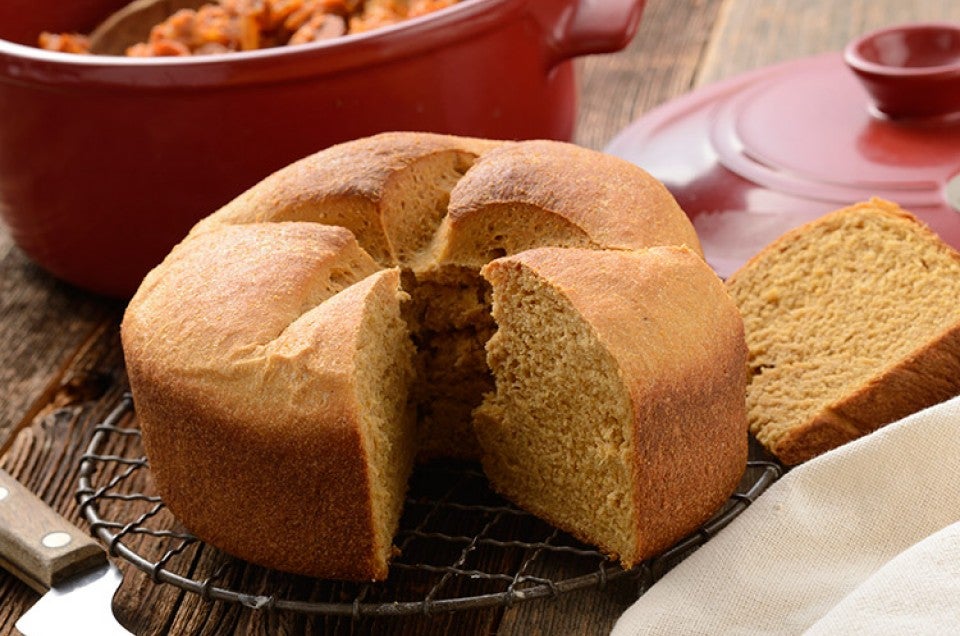


If you were to take your best guess at where much of my energy and enthusiasm for baking and writing about food comes from, what would you say? Wait, I'll make it even easier and narrow it down to just a few choices.
And the results?
In all honesty, though, without the phone calls, emails, letters, and comments that come through from enthusiastic bakers all around the world, it would be much harder to keep the creative juices bubbling when it comes to food. I consider myself so lucky to be able to talk, learn, and share so much about food every day. If you see me answer your blog comment with "thanks for sharing," know that I mean it from the bottom of my heart.
In fact, I keep a little black notebook near my left hand and every time I see a great food idea, I add it in. Each blog planning meeting my notebook and I show up full of new ideas. Blogs for Sweet Potato Gnocchi, Banana Cream Cheese Roll, and so many more had their origins in that little black book.
I'm not sure where or when the conversation about Anadama bread took place, but I do remember thinking "Wow! It's been ages since I've made that!" I can remember, too, when I made a loaf nearly every week, to be toasted and devoured with butter and strawberry jam. So, I send out a universal thanks to whoever sent me the nudge, because Anadama bread is back in our lives and I couldn't be happier.
Come, learn to make New England Anadama Bread with me, and then we can both share.
In the bowl of your mixer, whisk together:
3/4 cup (113g) yellow cornmeal
1 1/4 teaspoons (8g) salt
3 tablespoons (43g) butter
1/4 cup (85g) dark molasses (spritz the measuring cup with cooking spray to help the molasses slide right out)
Over this, pour 1 cup (227g) boiling water. As you can see, I like to use the hook to manually mix everything together. Saves me washing a spoon.
To make sure I get all of the molasses out of my measuring cup, I usually scoop up some of the hot liquid and swirl it in the cup, then pour it back into the bowl. Making fun squiggles is just a bonus.
Set the mixture aside to cool to lukewarm.
To the cooled and fragrant liquid, add:
1/4 cup (28g) Baker's Special Dry Milk or nonfat dry milk
2 cups (241g) King Arthur Unbleached All-Purpose Flour
1 cup (113g) King Arthur 100% Golden Wheat Flour
2 1/2 teaspoons instant yeast
Mix on low until a shaggy ball starts to form, and then knead for about 6 to 7 minutes. The dough will be stiffer than regular bread dough, but should still feel moist to the touch.
BUT WAIT! What if you get through your kneading stage and the dough, despite your best efforts, still seems too dense and heavy? Do you really need to toss it out and start again? Is there any hope at all?
Check out the cracks and fissures in my dough, a sure indication that my dough is too dry. If I let it go like this, it won't rise very well (think about blowing up a dry balloon, not so easy) and my resulting bread will be crumbly and heavy.
This dough can absolutely be saved, and quite easily too. But I have to tell you, the pictures are a bit, well, thought provoking? Laughter inducing? Just plain weird?
OK, I've warned you, so take a look.
Dear God! Yes, I KNOW what it looks like. Believe me, I've tried to make it look like something else, really I've tried, but some things just can't be polished.
What is it really? It's the saving grace for dry dough. First, you want to take a bench knife or chef's knife and chop the dough up into walnut-sized pieces. No need to be precise, you just want to disassemble what you've assembled.
Next, place the pieces back in the bowl with 2 to 4 tablespoons of water, depending on how dry your dough seems. Mix on low speed to start. It will be a slippery, wet mess at first, but give it time and the dough will begin to absorb the extra water and will smooth out again.
And before long, your dough has been rescued from a dense, dry fate. Smooth and supple again, it'll have a slight tackiness and good elasticity.
Cover well and set the dough aside to rise for about an hour. It will look round and puffy.
Gently de-gas the dough and press out any large air bubbles. Shape into a log and place in a well greased 8 1/2" x 4 1/2" loaf pan; or, for a more rustic round shape, into a boule placed in a 3- to 4-quart Dutch oven.
Cover and let rise another 80 to 90 minutes, or until doubled in size.
Bake the bread in a preheated 350°F oven for about 35 to 40 minutes. A digital thermometer inserted into the center of the loaf will read around 200°F when the bread is done.
Serve your bread warm with butter and honey, as a side dish to stew or soup. It also makes incredible toast. Crisp, with the flavors of cornbread, but far less fragile. Paired with a bowl of baked beans, it's a New England breakfast that can't be beat.
So, now I need to cross off an entry in my little black book once again. Keep those ideas, comments, questions, and memories coming;, I've still got pages and pages to fill!
Please make, rate, and review our recipe for New England Anadama Bread. (And find out about the funny name, too.)










